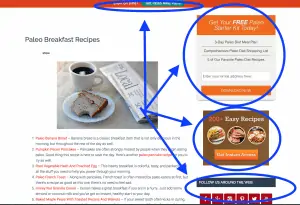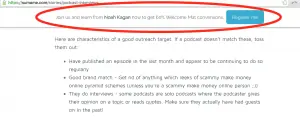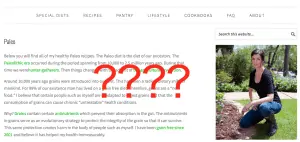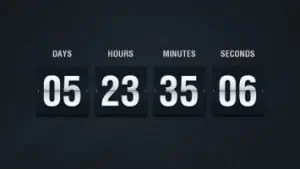Conversion rate optimization isn’t something I haven’t covered a whole lot on this blog. But it’s critical to achieving success as a marketer. After all, our goal is not just to drive traffic, it’s to make money! That’s why I’m super excited to share this guest post by my good friend Nathaniel Smith. The results he’s personally achieved with the strategies he shares below are truly incredible! By getting this foundation in place, you’ll be poised to generate repeatable revenue and increase your ROI.
—
Everybody needs traffic. It’s the “tree-in-the-woods” conundrum. If you create content or build a product, it’s as-good-as-worthless if you don’t have eyeballs on it.
That’s why traffic strategies like Search Engine Optimization and guest posting will always be winners.
But traffic alone will not grow your business. In fact, you can generate all the traffic in the world, but if it’s not converting, it’s pretty much a waste of time and money.
If you read this blog regularly, you know how to get more traffic. But all the best strategies take time to deliver sustained results. Fortunately, traffic growth is only one of three ways to increase your earnings.
The other two ways to increase earnings are (1) sell to more of your existing subscribers and (2) earn more from each person who buys your products or services.
Conversion Rate Optimization, or getting more of your existing traffic to buy, was the fastest growth lever for my business, The 80/20 Drummer. In 2015, my profits grew 8x, while my list size only doubled. That means I can attribute a 4x increase in profit directly to improvements in my conversion rate, and in this post I’m going to share the 4 biggest wins.
1. Grow Your Email List and Nurture Your Leads
E-commerce marketers have it easy. If you need a widget, you find it on Amazon or a merchant’s store. Good photos and an easy-to-find “buy” button are all that’s necessary once a customer is on the product page.
But think about the last time you spent more than $100 on a digital product or service online. You probably didn’t buy right away.
And I’m not just guessing. “Selling the Invisible”, as Harry Beckwith, author of the book by the same name says, is hard. According to one statistic, if 15% of your eventual customers buy immediately, that’s an industry-leading conversion rate for digital products or services, which, along with SAAS, consulting services, insurance, finance, have notoriously long sales cycles.
That means the majority of your eventual buyers need more interactions with you before they’re ready to pull out their pocketbooks. According to Fergal Glynn, VP of marketing at Docurated, most customers need 6-8 interactions with you before they’re ready to buy. Even if you’re lucky enough to have 15% buy immediately, what are you doing with the 85% of potential customers who need longer?
Picture the buying cycle. Maybe your customer saw a popular piece of your content on the web. Then maybe he/she heard an interview with you on a podcast. Then maybe you got him/her back to your site with a remarketing campaign.
After a couple of months, if the customer still has the problem, he’s statistically more ready to buy.
Email marketing takes a process that can seem serendipitous, and makes it predictable and repeatable.
The average sales cycle for digital products and services is 90 days. So what are you doing during those 90 days to tell your story? Waiting and hoping your customers will research you on their own?
What if you could send them a series of emails that would both provide immediate value to them, educate them about your premium solutions, and gradually earn their trust that you’re right fit to solve their problem.
That’s why things like perfect copy and dialed-in conversion rates are great, but not even the lowest-hanging-fruit.
If you don’t have an existing email list, or if you do but don’t have an autoresponder, that’s great news. Just by implementing a short autoresponder that provides valuable and relevant content, and occasionally reminds people you have things for sale, it’s not inconceivable you could double your earnings without growing your list one iota.
But say you already have an email list with some kind of autoresponder. The next step is making it convert better…
2. Know The Most Impactful Levers to Pull
James Altucher is fond of the story of a plumber who, after charging a homeowner with clogged pipes $100, taps one length of pipe and resolves the blockage in seconds.
“Wait – how is that worth $100 if all you did was tap a pipe?” demands the homeowner.
“Because I knew where to tap.” retorts the plumber.
It’s the same thing with conversion funnels.
I get paid for consulting because I’ve resolved enough kinks in my own funnel and other people’s, that I “know where to tap”. Below, I’m going to give you the crash course.
There are three parts of your funnel to look at:
- Traffic
- Email opt-in conversion rate
- Sales conversions rate
Mike’s got you covered with great solutions to the first on this blog, but I’ll give you some benchmarks for the second and third.
(“Benchmark”, as I’m using it here, just means a standard to compare you own funnel against, to see whether something is low-hanging-fruit or you should move on to something else.)
3. Increase Your Email Opt In Rate by Leading Your Website Visitors
Your opt-in conversion rate is the percentage of your web traffic that opt onto your email list. Of course your leads come from multiple sources, paid and free, and land on multiple pages on your site – blog articles, homepages, and dedicated landing pages. But marketing expert and I Will Teach founder Ramit Sethi says If your aggregate opt in conversion rate (across all pages of your site) is between 10-15%, you’re among the best in the industry, and you’ll probably increase your sales faster by intervening somewhere else.
If you’re using a fancy SaaS app for your opt ins, it probably calculates your opt in conversion rates for you, but you can do it yourself as long as you have analytics on your site.
- Choose a time period, like 30 days. Check out your total website traffic for that time.
- Next just log into your email provider and see how many new subscribes you had during the same period. (Gross; not Net, because if people are unsubscribing the problem is elsewhere in your funnel.)
- That’s it! If you want to get more granular, use a plugin from Mailchimp or Optinmonster (which works like a voltage adaptor, plugging into your site and sending people to any email service you use), which will track your opt-ins for individual pages. This will become important below.
If your overall rate is between 10 and 15%, great. Move onto sales conversion rate (which I’ll discuss in greater detail in my next tip). If it’s less than 10%, we need to get more granular.
Look at the opt in rates for your homepage and most popular content to see if some parts of your site are severely underperforming. When I did this with a client, her homepage rate was a decent 8%, but her posts had less than a 1% opt in rate.
Once you identify the suspects, here are some “common offenders” that might be hurting your opt-in conversions:
On your popular blog posts:
- Multiple calls to action. That means are you asking your reader to do more than one thing on your page? Share on social? Get your free report? Subscribe to the newsletter? Leave a comment? Get rid of everything but one opt in offer – hopefully your best performing one – that you’ll display in multiple places on your page.
- Not making the single offer in multiple places: blog sidebar, bottom of the post, floating “Sumo Me”-style opt-in.
On your homepage:
- Hard to find opt-ins. Let’s start small: can people find where to opt in? Do you have a clear opt in message above-the-fold of your homepage, with a clear description of what people will get in exchange for their email address? (Again, I recommend your most popular lead magnet.)
- Inconsistent messaging between linked lead sources and page copy. Is the opt-in offer what people were expecting if they arrived at your homepage from elsewhere on the web? Ironing out inconsistencies between lead-source copy and on-page copy will alleviate both confusion and “bait-and-switch” feelings.
- Double opt-ins. If your customers have to wait more than 2 seconds for a “next step” after entering their email addresses, you’ve lost a good number of them. As soon as your customer enters his address, is he redirected to a page that either delivers the promised content or promises it’s on the way to his inbox and makes him another offer? Double opt-ins (sending a customer back to his inbox to “confirm” before he receives anything) are bad for two reasons: first, even in a world with perfect email delivery, you’ll lose a certain percentage if you make them confirm. Second, email delivery is often delayed, meaning you’re now asking your eager customer to check back in ten minutes. Death.
But say you’re getting 10-15% of your website traffic onto your list, and you’re sending them an autoresponder with popular content that occasionally mentions you have products or services for sale. Are you done? If not, what’s next? Super-dialed-in copy? To-the-minute email timing? Red “buy now” buttons instead of green?
No need to get crazy. There’s an “80/20” (A small subset of interventions responsible for a large subset of results) of optimizing your sales conversion rate. If you do everything else wrong, consider using scarcity.
4. Close The Cart to Create Urgency and Increase Sales
I saw a slide on a call with one of Ramit Sethi’s conversion coaches depicting a student’s launch. When she put an end date to the availability of her digital product, conversions to the same list doubled. What’s more, 50% of the total sales happened the last day.
It reminded me of the time around a year ago that one of my mastermind groups did a competition to track our open and conversion rates on an email launch. Both a fellow member and I noticed the same thing: the “last chance to buy” email had the highest conversion rate of the series.
Here’s why that’s important: you’ve set up a list. You’re giving your subscribers an autoresponder that delivers valuable content, and reminds them occasionally you have solutions for sale that could solve their problem. Your opt-in rates to your list are good. But you’d still like to increase your sales. Now it’s time to look at those “reminders that you have stuff for sale.”
Primary takeaway? Your products/services aren’t perpetually available. You only open up access to the sales page intermittently.
It’s counterintuitive, but the math doesn’t lie. This doubled my conversion rates. I have some suspicions as to why.
- Scarcity accomplishes the same thing as sales without teaching customers only to buy at discounted prices: if you think this might be a good fit, better to buy now and take advantage of a refund policy than sit on the fence. You’re not sure when it will be available again.
- It also gives you an excuse to send emails educating customers about your product or service (because you’re announcing the “launch”).
- Finally, it gives you an excuse to send emails reminding them to buy (because the cart is closing).
You can do launches manually, simply by posting sales pages only at select times, and emailing your list to let your subscribers know. But you can also make them “evergreen”, by giving every subscriber a launch a certain amount of time after he/she subscribes. Tools like Timerlay will switch your sales page to a “promotion expired” page automatically, a given amount of time after a customer clicks to the sales page (unless she clears her browser cookies).
The other crucial bit is give people multiple opportunities to buy, with content in between. My site traffic converts at almost 2%, but that’s an aggregate, among multiple opportunities to buy. It sounds complicated, but you don’t need any fancy segmentation to do it. Here’s what I’d try to start:
- A week of content after subscribers opt-in, then their first opportunity to buy, for four days. Announce it, open the cart, remind them it’s closing, and close it.
- 3-6 weeks of content to those who didn’t buy the first time, then another “launch”.
- A few “whole list” launches, to everybody who’s been on your list more than 2 months, every year.
Remember this: going through a launch and not buying is part of your funnel for most of the subscribers who will eventually buy. They’ll know the drill, they’ll have time to think about it, and some will buy at the next opportunity.
Have more questions about starting a funnel, or the best copy to use in the emails? Click here to download the exact email sequence that – together with the timing and scarcity elements I discussed – converts at nearly 2% of my total web traffic, and I’ll send you my 2-module mini course on building your funnel from scratch as a bonus.
Big thanks to Mike for allowing me to guest post on his great site!
